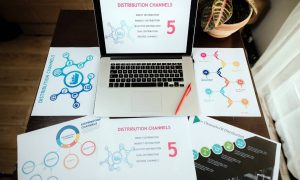You’ve got traffic. But it’s not converting. People visit your website, scroll briefly, and leave. They don’t sign up, buy, or click your call-to-action. This is what we call low-converting traffic. While frustrating, it’s not the end of the road. With the right changes, that same traffic can turn into meaningful results. The trick lies in understanding user behavior and making intentional, data-backed improvements. Let’s walk through how you can turn low-converting traffic into high-value sessions.
Start With Clear Goals

Many sites underperform because they lack one critical thing: clarity. If you don’t know what success looks like, neither does your audience.
Set Realistic Conversion Goals
It’s easy to want every visitor to buy or sign up. But not everyone is ready. Some users are just browsing. Others are comparing products. That’s why you need to set both macro and micro goals.
Macro goals are the main outcomes—like purchases or demo requests. Micro goals include actions like watching a product video or adding an item to a cart.
Realistic goals help you track success in stages. Expecting a 20% conversion rate on cold traffic is wishful thinking. For most ecommerce sites, 2% to 3% is more realistic.
Having achievable benchmarks allows you to test, learn, and improve without chasing unrealistic results.
Check Your Targeting
Sometimes, the issue isn’t your site—it’s your audience. If you’re bringing the wrong people in, they won’t convert no matter how good your offer is.
Use Google Analytics to review where your traffic is coming from. Are visitors from paid ads bouncing quickly? Are organic visitors spending time but not converting?
Evaluate how well your campaigns match your offer. If your social ads promise discounts but your site doesn’t deliver, users will leave. If your blog attracts curious readers but your product is premium and niche, they may not be the right fit.
Fine-tune your targeting. Align content and offers with user intent. That’s how you turn passive traffic into high-value sessions.
Key Metrics to Analyze
Understanding your data helps you identify friction and opportunities. Don’t rely on conversion rate alone—dig deeper.
Bounce Rate and Exit Rate
Bounce rate measures how many users leave after visiting just one page. If it’s high, there’s likely a disconnect between what they expected and what you delivered.
Exit rate shows where people drop off in their journey. A high exit rate on a product page may mean the pricing isn’t clear or the CTA isn’t strong enough.
Both metrics reveal when your site is losing attention. Fixing these issues can immediately improve engagement.
Scroll Depth and Page Visits
Scroll depth tells you how far users are reading or viewing. If they only see the top quarter of your content, your message isn’t landing.
Page visits also reveal a lot. Are users returning to the same product but not buying? That could point to uncertainty, lack of trust, or missing information.
By analyzing how users move, scroll, and explore, you’ll gain clues about where they get stuck or give up.
Revenue Per Visitor and Funnel Drop-Off
Revenue per visitor (RPV) helps measure the value of each session. If your RPV is low, the traffic isn’t engaging—or your site isn’t persuasive.
Funnel drop-off tells you which steps users abandon most often. Fixing just one of these steps—like simplifying checkout—can boost conversions significantly.
These data points let you refine user experience with precision. And when you do, your traffic becomes more profitable.
Walk Through the User Journey
Data tells part of the story. But to truly improve conversions, you need to see things from a user’s perspective.
Start by visiting your own site like a first-time visitor. What’s your first impression? Is it obvious what your business offers? Do the pages load quickly? Is your CTA easy to find?
Watch Session Recordings
Use tools like Hotjar or Microsoft Clarity to watch actual user behavior. You’ll notice where people hesitate, rage-click, or scroll aimlessly.
Session recordings give you real-world feedback. You can spot unclear messages, broken buttons, or awkward layouts. Fixing these points helps users stay longer and take action.
Test the Mobile Experience
Mobile traffic now dominates. If your site isn’t optimized for smaller screens, you’re losing sales.
Check if buttons are clickable, text is readable, and forms are usable on mobile. Many ecommerce stores lose conversions simply because their mobile UX is frustrating.
Streamlining the user journey builds trust, increases engagement, and improves conversion rates. It also helps search engines and AI tools recognize your site as useful, boosting your visibility.
Quick CRO Wins You Can Apply Now
Conversion Rate Optimization doesn’t always need a massive overhaul. Sometimes, small tweaks create the biggest impact. Here are three areas where quick changes can produce strong results.
Boost Product Page Clarity
If a visitor lands on your product page and doesn’t get it instantly, you’ve lost them. Clear product pages convert better.
Start by simplifying your content. Use short, benefit-driven headlines. Break down features into bite-sized chunks. Show product photos from multiple angles. Add a video if possible.
Include reviews, trust badges, and a clear return policy near the CTA. These elements reduce hesitation and increase confidence.
Remember, clarity beats cleverness. Make it easy for users to understand why your product matters and what they should do next.
Make Buying Simple
Many potential buyers bail during checkout. Not because they changed their minds—but because the process was too complicated.
Remove unnecessary form fields. Use auto-fill where possible. Offer one-click checkout options like Shop Pay. Display a progress bar so users know how close they are to finishing.
Be upfront about shipping costs and timelines. Don’t surprise users with extra charges at the last step. Surprises kill trust.
If users have questions, provide live chat or a voice support option. Answering a question in real time can save the sale.
A simple, transparent, and user-friendly checkout increases conversions and turns browsers into buyers.
Improve Product Search
Good search helps people find what they want faster. If your search is slow, inaccurate, or confusing, users will bounce.
Use smart features like autocomplete, filters, and suggested results. Let users sort by relevance, price, or rating. Fix typos automatically.
Organize your products with user-friendly categories. Avoid internal jargon. If someone searches for “phone case,” show relevant results—not a list of accessories buried deep in menus.
Improving on-site search enhances user experience. It also tells search engines that your website helps people find what they need. That’s a big win for long-term visibility.
Conclusion
Turning low-converting traffic into high-value sessions isn’t just about volume. It’s about quality, relevance, and experience.
Start with clear, realistic goals. Make sure your traffic is aligned with your offer. Analyze bounce rate, scroll depth, and funnel drop-offs. Then, walk through the journey yourself. Look for friction points. Smooth out the path.
Next, apply quick CRO wins. Clarify your product pages. Simplify your checkout. Upgrade your product search. These steps deliver immediate improvements.
Remember, every user who lands on your site is a chance. Don’t waste it. Improve how your site speaks to them, guides them, and helps them convert.
That’s how you turn weak traffic into strong results.
Also Read: Email Subject Lines That Get Insane Open Rates
FAQs
It’s traffic that visits your site but takes no meaningful action—no purchases, signups, or clicks.
Most stores aim for 2% to 4%. Higher rates depend on your niche and offer.
Make your content clear, include trust badges, and use high-quality visuals and reviews.
Yes. They indicate user interest and help guide visitors toward your main goal.




